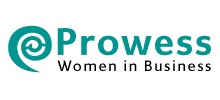Staying on top of your business in the new world of work is no mean feat. Hybrid working patterns have quickly emerged, forcing upper management to take stock of their current processes and implement new ones to maintain employee engagement and productivity.
The result? Businesses across multiple sectors are even more reliant on technology to achieve success. Apps, software and tools have added a new virtual dimension to modern business. Now, the goal for many organisations is to optimise their use of these various apps to create productive working environments.
One of the most effective ways to increase and maintain internal efficiencies is using employee monitoring software, but not all businesses know how sophisticated this kind of software has become. So what is it, and how can it be used to optimise your organisation?
What Is Employee Monitoring Software?
Simply put, employee monitoring software helps managers and business owners keep track of their employees’ activity and performance. Tools like Handdy allow managers to see exactly how their staff use their time while at work, from the websites they visit to their overall engagement.
They differ from project management and communication tools like Slack and Monday, as they give key insights into highly specific aspects of their employees’ workday instead of relying on the staff’s input. This raises a valid question — should you use employee monitoring software?
Should You Use Employee Monitoring Software?
A few aspects of your business need to be considered before implementing software that tracks your employees’ activity. After all, introducing new technologies that are to be used company-wide shouldn’t be taken lightly.
Ask yourself and your trusted upper management the following questions to decide on whether you should use employee monitoring software:
-
How Large Is Your Organisation?
You might not think that smaller organisations could profit from employee monitoring software, but the opposite is true. Smaller companies rely on the consistent output of only a few staff members to produce high-level work. Since fewer employees carry the responsibility for the company’s success, inefficiencies can upset the workflow of your entire company. Larger organisations can also take advantage of tracking software as it can reduce the number of resources required to monitor employee performance.
-
Are Your People Management Processes Efficient?
Managing people is a complex, multifaceted task. Studies have shown that managers experience more stress than employees yet often receive poor support in their roles. Analyse your current management practices and get feedback from your management teams to assess whether or not your processes are up to scratch. It might be the case that employee monitoring software can help your managers spot potential issues and other red flags early instead of solely relying on their intuition from one-to-one meetings and raw data from performance reviews.
-
Do You Trust Your Employees?
Trust is vital for the continued success of your organisation. Without it, communication breaks down and work quality plummets. You need to trust your lower-level employees to be accountable for their work, and managers should be given the right tools to provide accurate reports on their teams’ performance, especially if they’re working at least some of the time remotely.
Once you’ve answered these questions honestly, you might consider implementing some form of monitoring software within your organisation. Some employees may not be too fond of the idea of having their work closely monitored, as some might compare it to micromanaging. This is why it’s important to explain the overarching benefits of using the software to your managers and staff.
The Benefits of Using Employee Monitoring Software
Using new software doesn’t mean you need to overhaul all your current processes, nor should it mean your employees’ privacy is encroached upon. Instead, monitoring software can be used purely for the betterment of your business.
Should you choose to implement employee monitoring software, you could expect to enjoy the following benefits:
Higher Employee Productivity — If a particular employee is struggling, monitoring software can be used to evaluate the aspects of their role they’re wrestling with. If they’re not preparing themselves enough before important calls, proofreading their work or spending too much time on low-priority tasks, tools can be used to target aspects of their work for improvement.
Increased Productivity — Remote workers can feel detached from other employees, including their line managers. This can result in reduced work quality and efficiency. With the right software, each team member is responsible for managing their time effectively, allowing them to perform to the best of their ability and produce results within given time frames.
Improved Accountability — When you let your teams know that you’ll be using software to monitor their work, employees will need to become more accountable for their individual performance. They’ll be aware that their output directly impacts their colleagues, and this will help them see how valuable their input is in relation to the business’s success as a whole.
Implementing Employee Monitoring Software
For the most part, employees will continue working from home at least some of the time. This hybrid working model has several advantages for employees, but it comes with a few drawbacks, too — from a lack of team cohesion to reduced accountability and a lack of effective communication. Employee monitoring software can present an interesting way for managers to engage with staff under their supervision and could facilitate a more open, honest and productive work environment from which everyone can benefit.
